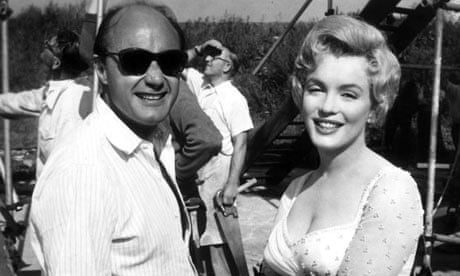The cinematographer Jack Cardiff's long and distinguished life made him a virtual folk memory of the movies, a man whose vaudevillian father worked with Chaplin, who began his career in the silent era, became the first cameraman chosen by Technicolor to be trained in colour photography and then achieved greatness when Michael Powell asked him to shoot his films: A Matter Of Life and Death, Red Shoes and Black Narcissus. He was to work with Huston, Hitchcock and Welles, and with some of the most beautiful and famous women in screen history. But it was perhaps the association with Powell and Pressburger which made his name, enabling his mastery of light, and bold, even ecstatic and hallucinatory deployment of vivid colour.
Martin Scorsese's friendship with Powell, and passionate love of Powell's movies, also played a secondary role in reinforcing Cardiff's prestige - he contributed a warm foreword to Cardiff's 1996 autobiography Magic Hour and Scorsese's evangelism for Cardiff's greatness was perhaps partly instrumental in securing his honorary Oscar in 2001, to go with his actual Academy Award for Black Narcissus. Cardiff's career in fact continued in rude health until the 1980s, when he worked on action pictures by Arnold Schwarzenegger and Sylvester Stallone. He was also a successful director, his account of DH Lawrence's Sons and Lovers making it to Cannes in 1960.
The cinematographer is traditionally one of the most revered professionals on any film set, but Cardiff is one of the very few to achieve a kind of authorial brand-recognition, and this I think must surely stem from his inspired work on those Powell masterpieces. Particularly, perhaps, Black Narcissus, in which the Himalayas were plausibly, fascinatingly fabricated in Britain: an entire created world, a pre-CGI simulacrum of reality, was conjured up in a movie studio at least partly as a result of Cardiff's painterly control of light and colour.
The richness of that palette: the flowers, the sky, Deborah Kerr's discreet maquillage - all contrasting, stunningly, with the deathly pallor on the face of Kathleen Byron's Sister Ruth as she finally abandons herself to hysteria, despair and revenge on those fictional heights. Without the "look" of that film, the story would have meant far less, and that look had just enough exquisite unreality to draw attention to the genius of the man who had crafted it.
Cardiff was also famous for working with Ava Gardner, Marilyn Monroe and Sophia Loren and, just as Douglas Sirk was to accumulate a reputation for being a woman's director, so Cardiff acquired a discreet reputation as a woman's cinematographer, treasured by female stars as someone who could light a woman's face intelligently and bring out the facets of her beauty: that now seems like a quaint and almost genteel art, belonging more to the world of portraiture, but it was a part of his creativity and humanity. The cinema has lost a great master.



Comments (…)
Sign in or create your Guardian account to join the discussion